 Your new post is loading...
 Your new post is loading...

|
Scooped by
Gust MEES
|
Is critical thinking for kids? Absolutely! The art of critical thinking begins in childhood. What kind of thinker is your child? Does he believe everything on TV? Does she always figure out how to get what she wants?
Does he ask questions? Does she go along with what her friends suggest? You can help develop your child’s critical thinking skills by learning a few key guidelines!
Whether your child is just starting summer vacation or in the midst of the school year, parents can help keep minds active in fun ways. Critical thinking skills don’t fully develop until adolescence, but the foundations for good thinking develop in younger children.
The nonprofit Foundation for Critical Thinking cultivates core intellectual virtues that lead to fair-minded thinking. They have identified three ways K-6 children typically think. Learn more / En savoir plus / Mehr erfahren: https://www.scoop.it/t/21st-century-learning-and-teaching?tag=Critical-Thinking

|
Scooped by
Gust MEES
|
The ESP32 is the ESP8266 successor loaded with lots of new features. The ESP32 is a development board that combines Wi-Fi and Bluetooth wireless capabilities, and it's dual core. It is one of the best solutions for DIY Internet of Things Projects and DIY Smart Home Projects. With our course Learn ESP32 with Arduino IDE, anyone can learn how to build IoT projects in an easy way. In this page we provide a list with more than 20 tutorials and projects with the ESP32. Get Started with the ESP32 Read the ESP32 getting started guide and the ESP32 GPIO Pinout Reference Guide. Install the ESP32 add-on for the Arduino IDE (Windows instructions) or (Mac and Linux instructions)Start making projects. Here is a list with +20 free tutorials and projects with the ESP32: Getting started guides Getting Started with ESP32 Development BoardInstalling the ESP32 Board in Arduino IDE (Windows instructions)Installing the ESP32 Board in Arduino IDE (Mac and Linux instructions)ESP32 Pinout Learn more / En savoir plus / Mehr erfahren: https://www.scoop.it/t/21st-century-learning-and-teaching/?&tag=ARDUINO https://www.scoop.it/topic/21st-century-learning-and-teaching/?&tag=ESP32

|
Scooped by
Gust MEES
|

|
Scooped by
Gust MEES
|
Avec les nouveaux modèles d’enseignement, tous les équilibres, tous les codes sont remis en cause. Au sens strict du terme, il n’y a plus d’enseignant, pas de cours, pas de programme, rien que des cas concrets à résoudre en trouvant soi-même la solution ou en s’associant à d’autres élèves. Cette pédagogie met l’accent sur le comportement, les capacités à travailler à plusieurs et à apprendre très vite en autonomie.
Pour Romain Martin, vice-recteur pour les affaires académiques de l’Université du Luxembourg, «la principale erreur consiste à se focaliser sur les technologies elles-mêmes. Il ne faut pas simplement regarder l’outil, mais comment ces outils sont utilisés.» Une désacralisation des technologies pourtant au cœur des enjeux, au profit d’une démarche pédagogique nouvelle. La tendance est ainsi à l’«adaptive learning». [Gust MEES] pratiquant ceci déjà depuis 2002 et enfin reconnu... Learn more / En savoir plus / Mehr erfahren: https://www.scoop.it/t/21st-century-learning-and-teaching/?&tag=Modern+Learning https://gustmees.wordpress.com/?s=learning+2+learn

|
Scooped by
Gust MEES
|

|
Scooped by
Gust MEES
|

|
Scooped by
Gust MEES
|

|
Scooped by
Gust MEES
|

|
Scooped by
Gust MEES
|
The real principle on which human life is based is organic growth and development,” Robinson said. It’s based on the need to invent your own life.” But the education system is not set up to allow for that kind of organic development, although Robinson acknowledges that many educators are doing their best to protect this form of learning. “They’re doing wonderful work because they believe in kids and the work, but they’re doing it against a headwind,” he said.
Part of the problem is the multitude of opinions and lack of clarity on exactly what it is an education should do. Debates about how to improve education will continue to rage because at a fundamental level participants don’t agree about why (or if) kids should go to school. Robinson firmly believes that creativity is a central element of what sets humans apart from other forms of life on earth and so educators’ mission should be to bring out the unique creative energy within each child.
Robinson believes education is “to enable students to understand the world around them, and the talents within them, so that they can become fulfilled individuals and active, compassionate citizens.” He doesn’t deny that learning information about the world is important, but he says it’s equally important for students to understand their own talents, motivations and passions if they are going to lead lives that satisfy them. The current system of conformity and compliance leaves no space for this type of self-exploration. Learn more / En savoir plus / Mehr erfahren: https://www.scoop.it/t/21st-century-learning-and-teaching/?&tag=Sir+Ken+Robinson

|
Scooped by
Gust MEES
|
Do:
Give students multiple ways to access information: Not only will your lessons be more engaging, but students will be more likely to remember information that’s presented in different ways.
Individualize your lessons: It still makes sense to differentiate your instruction, even if students don’t have a single dominant learning style. Avoid a one-size-fits-all method of teaching, and think about students’ needs and interests.
Incorporate the arts into your lessons: Schools often focus on the linguistic and logical intelligences, but we can nurture student growth by letting them express themselves in different ways. As Gardner explains, “My theory of multiple intelligences provides a basis for education in the arts. According to this theory, all of us as human beings possess a number of intellectual potentials.”
Don’t:
Label students with a particular type of intelligence: By pigeonholing students, we deny them opportunities to learn at a deeper, richer level. Labels—such as “book smart” or “visual learner”—can be harmful when they discourage students from exploring other ways of thinking and learning, or from developing their weaker skills.
Confuse multiple intelligences with learning styles: A popular misconception is that learning styles is a useful classroom application of multiple intelligences theory. “This notion is incoherent,” argues Gardner. We read and process spatial information with our eyes, but reading and processing require different types of intelligence. It doesn’t matter what sense we use to pick up information—what matters is how our brain processes that information. “Drop the term styles. It will confuse others, and it won't help either you or your students,” Gardner suggests.
Try to match a lesson to a student’s perceived learning style: Although students may have a preference for how material is presented, there’s little evidence that matching materials to a preference will enhance learning. In matching, an assumption is made that there’s a single best way to learn, which may ultimately prevent students and teachers from using strategies that work. “When one has a thorough understanding of a topic, one can typically think of it in several ways,” Gardner explains.
Learn more / En savoir plus / Mehr erfahren: https://www.scoop.it/t/21st-century-learning-and-teaching/?&tag=Multiple+intelligences

|
Scooped by
Gust MEES
|
What have the Romans ever done for us? Well, obviously the roads – the roads go without saying. How about guidance for how to live in the 21st century? That seems less likely, but in fact the last few years have seen a flurry of interest in the work of three Roman Stoic philosophers who offered just that. They were Seneca, tutor to the Emperor Nero; Epictetus, a former slave; and Marcus Aurelius, himself emperor.
Modern books drawing on their ideas and repackaged as guidance for how to live well today include A Guide to the Good Life by William Irvine, Stoicism and the Art of Happiness by Donald Robertson, The Daily Stoic by Ryan Holiday and Stephen Hanselman, and How to Be a Stoic by Massimo Pigliucci. What all these books share is the conviction that people can benefit by going back and looking at the ideas of these Roman Stoics. There’s even an annual week dedicated to Stoicism.
Stoicism holds that the key to a good, happy life is the cultivation of an excellent mental state, which the Stoics identified with virtue and being rational. The ideal life is one that is in harmony with Nature, of which we are all part, and an attitude of calm indifference towards external events. It began in Greece, and was founded around 300BC by Zeno, who used teach at the site of the Painted Stoa in Athens, hence the name Stoicism. The works of the early Stoics are for the most part lost, so it is the Roman Stoics who have been most influential over the centuries, and continue to be today. Learn more / En savoir plus / Mehr erfahren: https://www.scoop.it/t/21st-century-learning-and-teaching/?&tag=Philosophy https://www.scoop.it/t/21st-century-learning-and-teaching/?&tag=Stoicism

|
Scooped by
Gust MEES
|
The demand for companies to create quality content is at an all-time high—and it’s no surprise.
The alternatives simply don’t work. If you’re creating mediocre or inconsistent content, you can’t stand out, and if you’re not creating content at all, there’s no way for your target audience to find you.
In fact, content is so highly prioritized that content writing and editing skills are among those with the highest demand in the jobs market.
Blogging has been the backbone of growth for companies across industries, and it’s thanks to the fact that:
Websites with a blog tend to have 434% more indexed pages
Companies who blog receive 97% more links to their website
Blogs have been rated as the 5th most trusted source for accurate online information.
On top of that, blogging sparks word-of-mouth promotion because 94% of people who share posts do so because they think it might be helpful to other. In other words, bringing value to your audience means they will want to pass that value onto someone else.
Learn more / En savoir plus / Mehr erfahren: https://gustmees.wordpress.com/?s=curation https://gustmees.wordpress.com/?s=blogs https://www.scoop.it/t/21st-century-learning-and-teaching/?&tag=Blogging https://www.scoop.it/t/21st-century-learning-and-teaching/?&tag=Curation

|
Scooped by
Gust MEES
|
Story
It's October again and I wanted to come up with a Halloween project using a Raspberry Pi. I saw a few haunted portraits scattered here and there but none of them really presented much in the way of a scare, just some simple movement.
I decided to expand on that idea and started looking for some good jump scare type videos I could use. This lead me to AtmosFx they have some really cool Unliving Portrait videos that are only $7.99 each. These were perfect for what I had in mind and allowed me to have more than one jump scare video that I could select manually or have it run each one at random.
Here is a video of the finished project. Learn more / En savoir plus / Mehr erfahren: https://www.scoop.it/t/21st-century-learning-and-teaching/?&tag=Raspberry+Pi
|

|
Scooped by
Gust MEES
|
Metacognition is awareness and understanding of one’s own thought processes. The ability to analyze one’s own thoughts that lead to statements like “I don’t know how to do this” and “I can’t do this” allows for students to take better control of the learning and to begin to apply the skills and knowledge they have to the situation. Often times, if we begin to ask the student questions about what he/she does know how to do, what skills he/she has that can be applied, the student is then able to begin to attend to the work. However, what has often happened in the past, is that the student has been unsuccessful in attempting to do something new, gotten a grade that felt “bad” and it has created a sense of anxiousness about being “bad” again and so it is easier to not try it than to be “bad”.
Carol Dweck’s concept of “Not Yet” has helped many educators rethink grading and the concept of grades as either “good” or “bad”. The power of the concept of not yet allows a student to be on a continuum to achieving “good” (learning) without the feeling of being “bad” (I failed again). The idea of allowing for mastery learning teaches students metacognition. Dweck’s focus is on rewarding the process of learning more than the learning itself which allows students to develop metacognition through repeated successful learning experiences. Learn more / En savoir plus / Mehr erfahren: http://www.scoop.it/t/21st-century-learning-and-teaching/?&tag=reflection http://www.scoop.it/t/21st-century-learning-and-teaching/?&tag=Psychology http://www.scoop.it/t/21st-century-learning-and-teaching/?&tag=Metacognition http://globaleducationandsocialmedia.wordpress.com/2014/01/19/pkm-personal-professional-knowledge-management/

|
Scooped by
Gust MEES
|
Want to grow your brand, increase fans, and start selling more?
Then you need to follow the marketing trends that guide the way people do business online.
And today’s biggest market trend? Social media.
There’s only one problem: social media management takes time. What was once relegated to a lowly intern is now a multi-million dollar business, with huge agencies doing nothing more than managing social media accounts.
That’s great for them. But what about for the everyday business owner? How can he or she grow a brand—for yourself or your business—on social media without spending countless hours or dollars?
Glad you asked.
Because today’s technology has a simple answer: content curation. Today, you’ll learn how to use content curation to speed up your social media strategy while reaping all the same results.
Let’s jump in! Learn more / En savoir plus / Mehr erfahren: https://www.scoop.it/t/21st-century-learning-and-teaching/?&tag=Curation

|
Scooped by
Gust MEES
|
In this tutorial we’ll explore the basic principles of LoRa, and how it can be used with the ESP32 for IoT projects using the Arduino IDE. To get you started, we’ll also show you how to create a simple LoRa Sender and LoRa Receiver with the RFM95 transceiver module. Learn more / En savoir plus / Mehr erfahren: https://www.scoop.it/t/21st-century-learning-and-teaching/?&tag=ARDUINO

|
Scooped by
Gust MEES
|

|
Scooped by
Gust MEES
|
Nous essayons d’être persuasifs lorsque nous présentons des arguments, qu’ils soient oraux ou écrits. Le public doit comprendre notre point de vue, avant même d’accepter nos arguments. Voilà en quoi consiste la rhétorique, dans laquelle les autres adoptent notre point de vue. Et qui de mieux qu’Aristote pour expliquer la rhétorique ? Les études de l’élève de Platon se sont concentrées sur la rhétorique. Ainsi, la rhétorique d’Aristote se compose de trois catégories : le pathos, l’éthos et le logos.
Le pathos, l’ethos et le logos sont les trois piliers fondamentaux de la rhétorique d’Aristote. Ces trois catégories sont considérées aujourd’hui comme différentes façons de convaincre un auditoire sur un sujet, une croyance ou une conclusion en particulier. Chaque catégorie est différente des autres. Néanmoins, connaître les trois nous aidera à impliquer les publics que nous abordons. Learn more / En savoir plus / Mehr erfahren: http://www.scoop.it/t/21st-century-learning-and-teaching/?tag=Irony http://www.scoop.it/t/21st-century-learning-and-teaching/?tag=Rhetorik

|
Scooped by
Gust MEES
|
November 17, 2018
The vast majority of the AI advancements and applications you hear about refer to a category of algorithms known as machine learning. (For more background on AI, check out our first flowchart here.)
Recommended for You
One of the fathers of AI is worried about its future
The kilogram is being redefined as a fundamental constant, not just a chunk of metal
The US military is testing stratospheric balloons that ride the wind so they never have to come down
The rare form of machine learning that can spot hackers who have already broken in
Machine learning, meet quantum computing
Machine-learning algorithms use statistics to find patterns in massive* amounts of data. And data, here, encompasses a lot of things—numbers, words, images, clicks, what have you. If it can be digitally stored, it can be fed into a machine-learning algorithm.
Machine learning is the process that powers many of the services we use today—recommendation systems like those on Netflix, YouTube, and Spotify; search engines like Google and Baidu; social-media feeds like Facebook and Twitter; voice assistants like Siri and Alexa. The list goes on.
In all of these instances, each platform is collecting as much data about you as possible—what genres you like watching, what links you are clicking, which statuses you are reacting to—and using machine learning to make a highly educated guess about what you might want next. Or, in the case of a voice assistant, about which words match best with the funny sounds coming out of your mouth.
Frankly, this process is quite basic: find the pattern, apply the pattern. But it pretty much runs the world. That’s in big part thanks to an invention in 1986, courtesy of Geoffrey Hinton, today known as the father of deep learning. Learn more / En savoir plus / Mehr erfahren: https://www.scoop.it/t/21st-century-learning-and-teaching/?&tag=machine+learning

|
Scooped by
Gust MEES
|
The Raspberry Pi Foundation has announced the Raspberry Pi 3 Model A+, offering several major improvements over the current compact version of the classic Raspberry Pi 1 Model A+.
The current Model A+ was getting long in the tooth, announced in November 2014 as the successor to the original Model A. The 2014 Model 1 A+ still employed the first Raspberry Pi's single-core chipset.
The new Pi 3 A+, available today, gains the same quad-core system on chip as the Raspberry Pi 3 Model B+ released earlier this year. The SoC is Broadcom's BCM2837B0, which is a 1.4GHz 64-bit quad-core Arm Cortex-A53 CPU.
Despite the upgraded specs, the Pi 3 A+ will still cost $25, or $10 less than Raspberry Pi 3 Model B+, which has double the memory. Learn more / En savoir plus / Mehr erfahren: https://www.scoop.it/t/21st-century-learning-and-teaching/?&tag=Raspberry+Pi

|
Scooped by
Gust MEES
|
Vor einigen Tagen haben wir Ihnen in einem Beitrag gezeigt, wie Sie selbsterstellte Zeichen wie z.B. Umlaute auf einem 1602 oder 2004 LC Display ausgeben können.
Die dort veröffentlichte Zeichentabelle beinhaltet jedoch bereits die Zeichen für "äöüß°µ" und "Ω". Für viele Anwendungen würden diese schon reichen.
Da sich die Tabelle jedoch nicht an den UTF-8 Standard hält, können diese Zeichen nicht ohne weiteres ausgegeben werden.
Über eine sogenannte Escape-Sequenz können wir jedoch den Chip direkt anweisen ein bestimmtes Zeichen auszugeben. Learn more / En savoir plus / Mehr erfahren: https://www.scoop.it/t/21st-century-learning-and-teaching/?&tag=LCD

|
Scooped by
Gust MEES
|
Eine Suggestivfrage ist eine Frageform, bei der der Befragte durch die Art und Weise der Fragestellung beeinflusst wird, eine Antwort mit vorbestimmtem Aussageinhalt zu geben, die der Fragesteller erwartet. Die Art und Weise der Frage hat den Zweck, auf das Denken, Fühlen, Wollen oder Handeln einer Person einzuwirken und den Befragten von einer rational bestimmten Antwort abzuhalten.
Eine Suggestivfrage ist eine Frageform, bei der der Befragte durch die Art und Weise der Fragestellung beeinflusst wird, eine Antwort mit vorbestimmtem Aussageinhalt zu geben, die der Fragesteller erwartet. Die Art und Weise der Frage hat den Zweck, auf das Denken, Fühlen, Wollen oder Handeln einer Person einzuwirken und den Befragten von einer rational bestimmten Antwort abzuhalten.
Suggestivfragen finden in der Psychologie, in der Rhetorik, in der Vernehmungspraxis, im Verkaufsgespräch, in der Markt- und Meinungsforschung sowie im alltäglichen Sprachgebrauch Anwendung, werden jedoch aufgrund ihres Beeinflussungscharakters nicht geschätzt.
Wer diese Frageform anwendet, stellt keine wirkliche Frage, sondern beabsichtigt, seine Idee, Sicht oder Meinung einer anderen Person zu suggerieren, um beeinflussend zu wirken.
Nützlich kann eine Suggestivfrage dann sein, wenn sie eine vorhandene Gemeinsamkeit im Denken, Fühlen, Wollen oder Handeln mit einer Person betonen soll. Learn more / En savoir plus / Mehr erfahren: https://www.scoop.it/t/21st-century-learning-and-teaching?tag=Critical-Thinking

|
Scooped by
Gust MEES
|

|
Scooped by
Gust MEES
|
When students are provided consistent opportunities to develop and discuss complex questions, they’re empowered with knowledge, curiosity, and intellectual courage. We can make our classrooms places that encourage students to keep asking questions—which are the foundation of learning.
CREATING A CLIMATE FOR QUESTIONING
Modeling questioning strategies that get all students involved allows students to develop confidence in their own ability to craft meaningful questions and share their responses. We also need to establish classroom procedures for respectful dialogue so that students feel safe in sharing their thinking with their peers.
I indirectly model questioning strategies by carefully considering the questions I ask. I set up the year with a few questions that are then discussed throughout the year. Through seminar discussions and reflective writing in the spring, for example, I use questions such as “How does where you live impact how you live?,” “How do humans continue to progress in a diverse world?,” and “How does constructive conversation cultivate empathy and promote participation in local and global communities?” to discuss content as well as to make connections to the world.
Students consider these questions as they participate in the Spotlight Challenge, a design thinking project I created to facilitate opportunities for students to conduct research, craft speeches, and call their peers to action. Consistently making these connections helps create a climate in which students become accustomed to questioning everything. Learn more / En savoir plus / Mehr erfahren: https://www.scoop.it/t/21st-century-learning-and-teaching/?&tag=questions

|
Scooped by
Gust MEES
|
One of the first lessons many people learn when starting off learning practical, hands-on electronics is the need for pull-up resistors. Whether to prevent floating I/O pins on a microcontroller or interfacing two circuits via an open-drain design; pull-up resistors are an often necessary but rarely appreciated component. So why do we use pull-up resistors, can’t we just connect a wire to the Vcc supply of our device? What size resistor should you use? Learn more / En savoir plus / Mehr erfahren: https://www.scoop.it/t/21st-century-learning-and-teaching/?&tag=makerspace
|



 Your new post is loading...
Your new post is loading...



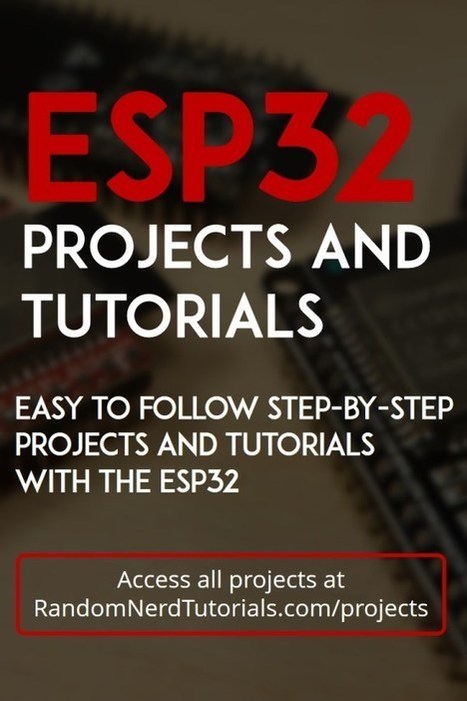







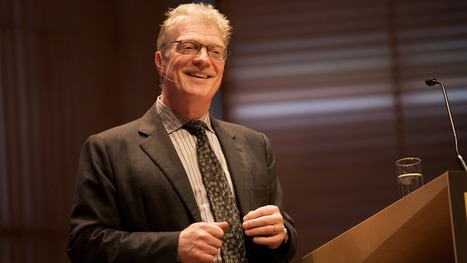

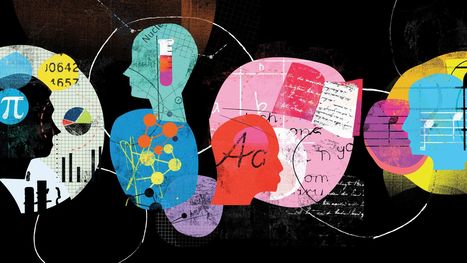








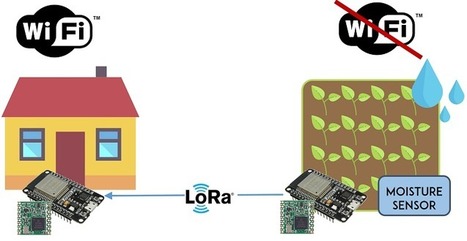



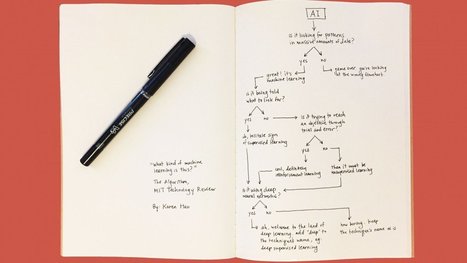



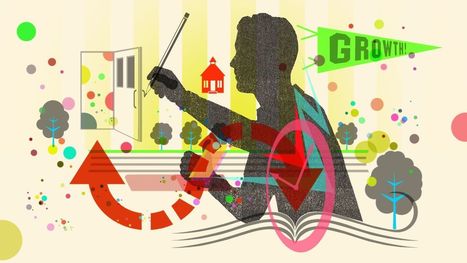
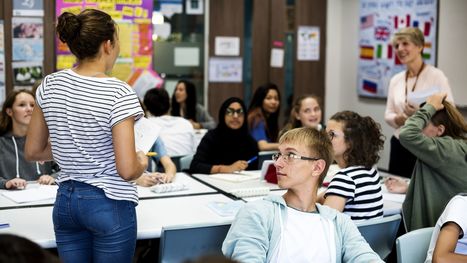






Me encantaría probar ese experimento con mi sobrino.